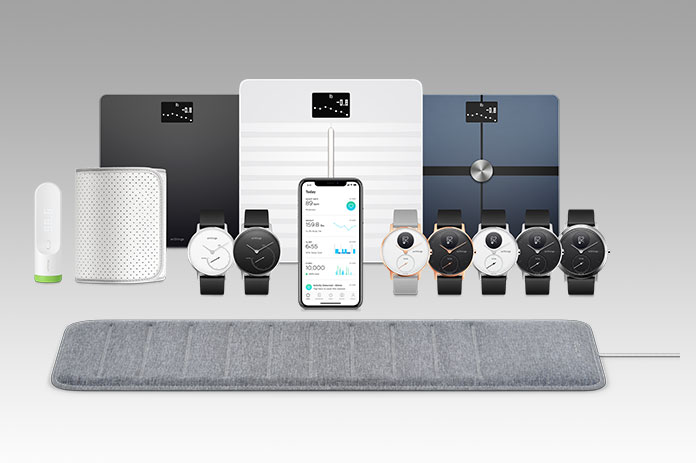1. Withings has come a long way ever since technological innovations took place in the body scales category. How different do you see yourself today, both in terms of innovation as well as supply chain management, as compared to a decade back?
We have certainly improved a lot through the years, using better technology to improve our scales and adding more medical features. In 2021, we received our first FDA clearance with Scanwatch, showing the quality of our measurements. At the end of this year, we will take the next big step in our innovation, releasing Body Scan, the first scale worldwide to segmental body composition, 6 lead ECG and nerve health.
On the operations side, supply chain management at Withings has proved its efficiency during the covid crisis. We maintained our production during this hard time despite a huge shortage worldwide on the components. This is possible thanks to the collaborative efforts of our teams, from engineering to sourcing, to procurement.
2. Can you tell us something about the segmented body analysis that the Withings Smart Body Scale is known to provide?
Body Scan uses bioelectrical impedance analysis (BIA) and conducts measurements at different frequencies. This multi frequency measurement is important for collecting the most accurate results, delivering improved accuracy by better computing water percentage and distinguishing extracellular water from intracellular water. This also allows for additional metrics such as visceral fat. Thanks to a retractable handle, we can also measure the muscle and fat mass of the different segments of the body (both arms, torso, and both legs).
3. Durability is pretty important when it comes to body scales. What has Withings done in this regard to ensure that the investment is long term?
Durability testing is an important part of product development. Drop tests, temperature and humidity cycles, weight verification, battery performances, mechanical parts resistance, and other tests are performed at different stages of product development, to ensure the best quality possible.
Amazingly, most of the Withings scales that were sold in 2009/2010 are still used today, which demonstrates the durability of our products.
4. How can the Withings scales be helpful in understanding the current state of the body, which can lead to a healthier tomorrow?
Each measure performed by Body Scan is really important. However, the most important thing is the combination of these metrics in a single device.
In less than 1 minute, you can have a full understanding of your body and follow a series of important biomarkers longitudinally, from the comfort of your home.
5. Describe the user privacy of the scales and how it works.
Withings has always taken data privacy seriously. In order to achieve this, security and privacy are taken into account during the product development of all of our products (including scales). As a proof, we are certified ISO 27001 and HDS (Health Data Hosting). Moreover, employees have to follow GDPR training in order to ensure that privacy best practices are applied for any activities at Withings. All of our data is hosted in a manner that is compliant with HIPAA and GDPR. We do not sell any user’s data to any third parties.
6. How fast you think is the “At-Home” device particularly for your industry growing and where does Withings fit in?
The at-home device industry was already trending strongly upward prior to the pandemic. With COVID-19, and less access to medical resources, many people took more control over their health, causing a large spike in at-home devices, with increased interest in at home medical measurements and testing. Withings has been committed to empowering people to take control of their health using medical grade at-home measurements that can be tracked over the long run. We see ourselves as a leader in this space, both because of the quality of our devices and measurements and because of the large (and growing) number of measurements available in our product suite.
7. Tell us about your smart watch and how does the ECG work in it?
An ECG, or electrocardiogram, is a graphical representation of the electrical activity of the heart. It can detect certain cardiovascular pathologies, like atrial fibrillation, or AFib. An electrocardiogram is a medical exam typically conducted by a trained team with a medical device using several electrodes attached to different points of the body. We have developed a watch that can record an ECG in 30 seconds anytime, anywhere, thanks to 3 electrodes discreetly embedded in the watch. To perform an ECG using ScanWatch, the user must place their opposite hand on the watch, allowing the measurement of a one-lead ECG.
At each heart beat, an electrical wave travels through your heart. When the user touches the electrodes of ScanWatch, an artificial electrical circuit is made between the “+” and “-” electrodes, just like when a battery is connected to a lamp. This circuit is able to record the heart’s electrical wave and transmit it to the watch. The ScanWatch ECG algorithm automatically acquires and filters the result to extract your heart’s electrical impulses from other irrelevant signals such as muscular activity that are not related to the heart and breathing. The result is a clear signal that detects heart rates, as well as irregularities, such as AFib.
8. Keeping a check in advance on various health segments is very important in today’s scenario. What are these various health parameters that are put into use in Withings devices?
Withings devices allow users to monitor a variety of health parameters, particularly those that relate to cardiometabolic health.  ScanWatch provides sleep analysis, in addition to activity, pulse, and oxygen saturation (SpO2), in addition to ECG. Body Scan provides vascular age and electrodermal activity, in addition to 6 lead ECG and segmental body composition.  BPM Core provides a comprehensive heart analysis, with ECG and heart sounds, in addition to blood pressure. Withings Sleep provides a detailed analysis of sleep patterns and disruptions, which can indicate a different element of cardiovascular risk given the relationship between poor sleep and increased cardiovascular risk.
9. Is there a possibility that your health outcomes get shared with your doctor immediately if there is a trigger?
We at Withings believe users should be in control of their health data. As a result, we do not directly share results with a doctor on behalf of a patient. But, because we do feel that information sharing is incredibly important, we have configured our app so that each user can download a PDF of their health data to share with their care teams. If there is a concern in a person’s measurements, they are advised to seek medical care and to share their data with their doctor.
10. So, where does Withings go from here? What are the next set of innovations that are taking place?
Withings will continue to innovate each year – it’s in our very nature as a company to do so. The major innovations we will work on in the near term are concentrated in a few areas. First, we will continue to expand both our range of devices, and the range of measurements in each, focusing on medical grade monitoring.  Second, we will develop our capabilities to combine these measurements for each user, to give each person a personalized picture of their health in near real-time. Third, we will go beyond measurement, to really engage our users in health behavior change, unlocking more improved health outcomes.




















